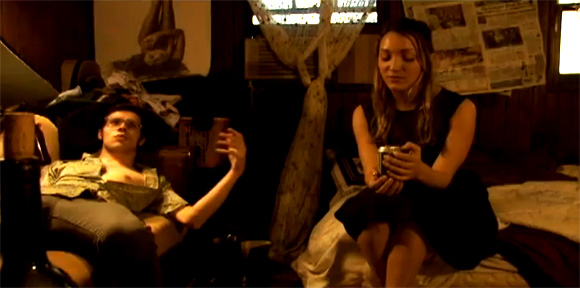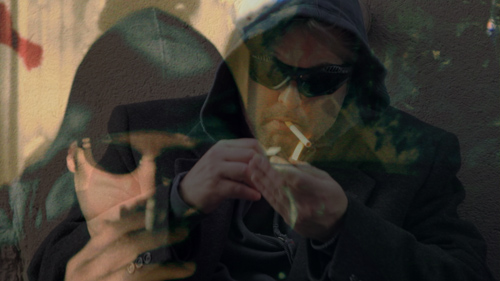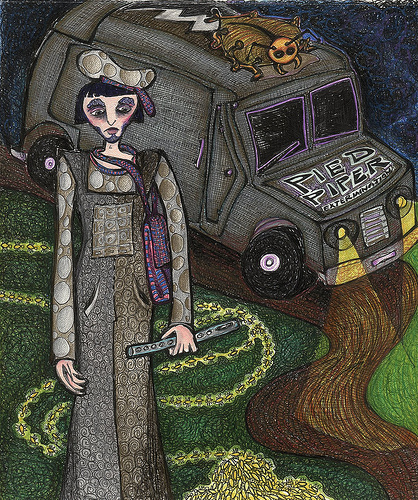This film’s writer and director, Maureen O’Connell, is a student at the Royal Academy of Dramatic Art in London. The school doesn’t make a good first impression with all its diction and dialects. But her film does. I’m a bit of a jerk about British drama training. Derek Jacobi once made an offer of employment that I refused while asked for another beer. That’s my general attitude about the Kenneth Branagh tribe. Nobody’s ever produced duller Shakespeare than Mr. I-Am-a-Hard-Working-Shakespearean-Dammit! O’Connell comes from Ireland… usually an ace up an actor’s sleeve… except in Mr. Branagh’s case. If O’Connell can keep RADA off of her back, she might just have something very fine going on as a director. She’s made a great film here. There are some technical issues with sound that annoy me, but they seem easily solvable by simply converting a stereo track to mono and blending a few audio transitions together. Someone could fix that up in a few minutes for her.
The film is about a comfortably middle-class girl who seems disconnected from her family and friends. She takes a sudden turn toward what I can only call suburban violence. The film builds quietly toward a surprising viciousness that seems very real. O’Connell darts around the action like she’s making a documentary. She works well with actors, somehow getting large groups of them to create scenes that are shockingly realistic and disturbing. There’s not a hint of awkwardness in her camera work. In fact, she seems, along with director of photography Arthur Mulhern, to revel in what I call the messy image. It is my belief that only people who seek out messy images can become great filmmakers. I will not explain that too much. It should be obvious to any filmmaker. The film contains a crystallizing and gorgeous image where O’Connell points the camera into the sun and tracks a running group of teenagers after a fight. It’s a great image that violates the norms of video photography. In fact, I notice quite a bit of light leaking into the lens during the film. O’Connell’s violence is shocking but also mesmerizing. She approaches it in a slightly off-kilter manner that I can’t quite get a handle on. Just when you think it’s time for her to calm down and quiet things, someone gets kicked in the face. She just has a natural sense of drama.
Her lead performer, Marilyn Bane, conveys her role brilliantly. She is a cross between likeable innocence and brute savage that I want to hit with a baseball bat. Really fine work. All the actors are terrific and the group of ass-kicking girls is just horrifying.
So this Maureen O’Connell is probably going to be making something very fine for the BBC soon. Get ready for it. Because it won’t be pretty. But it’ll leave a big bruise for a long while. She’ll most likely have to get over all that RADA stuff. Although, to contradict myself slightly, she does do this nice little Romeo & Juliet thing that I listened to!


